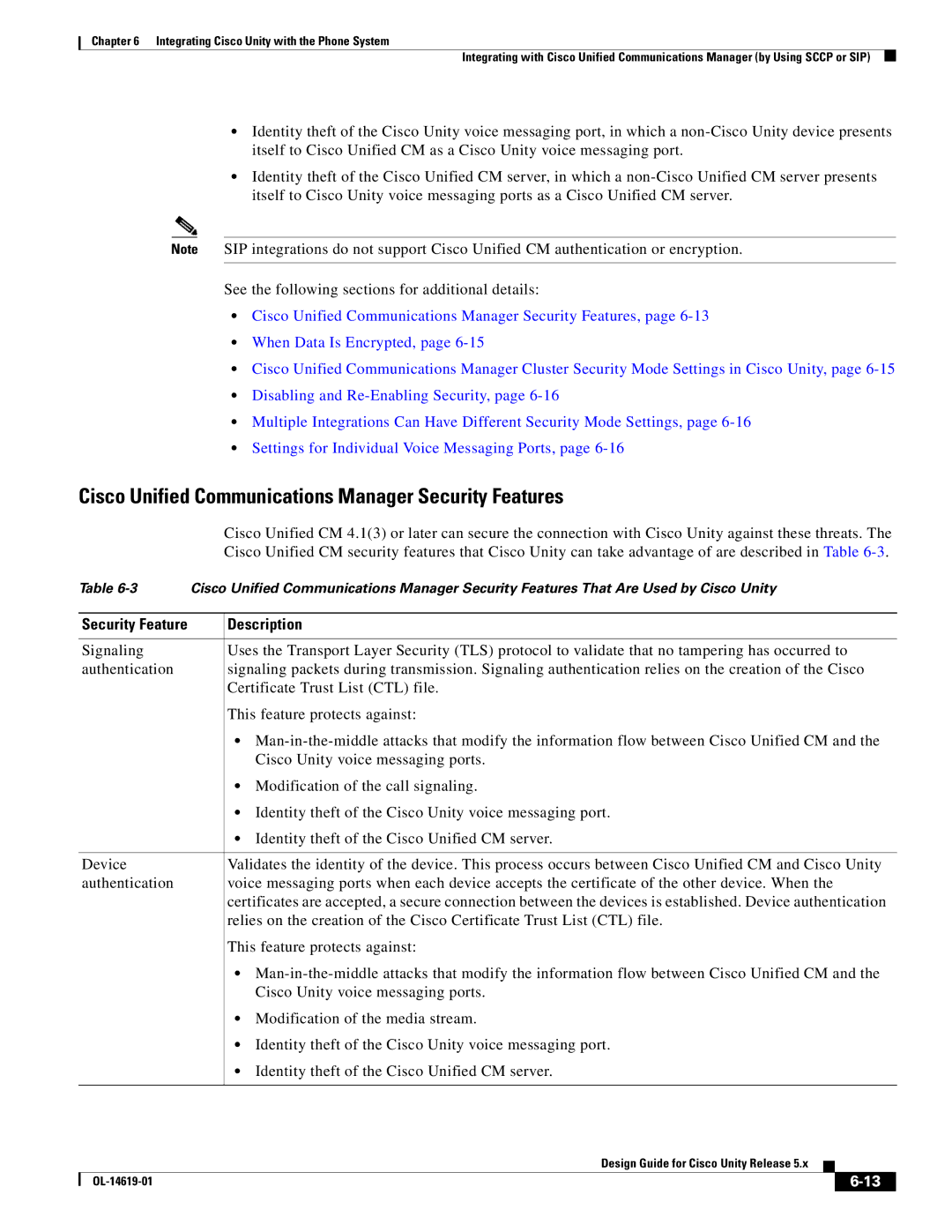
Chapter 6 Integrating Cisco Unity with the Phone System
Integrating with Cisco Unified Communications Manager (by Using SCCP or SIP)
•Identity theft of the Cisco Unity voice messaging port, in which a
•Identity theft of the Cisco Unified CM server, in which a
Note SIP integrations do not support Cisco Unified CM authentication or encryption.
See the following sections for additional details:
•Cisco Unified Communications Manager Security Features, page
•When Data Is Encrypted, page
•Cisco Unified Communications Manager Cluster Security Mode Settings in Cisco Unity, page
•Disabling and
•Multiple Integrations Can Have Different Security Mode Settings, page
•Settings for Individual Voice Messaging Ports, page
Cisco Unified Communications Manager Security Features
| Cisco Unified CM 4.1(3) or later can secure the connection with Cisco Unity against these threats. The |
| Cisco Unified CM security features that Cisco Unity can take advantage of are described in Table |
Table | Cisco Unified Communications Manager Security Features That Are Used by Cisco Unity |
|
|
Security Feature | Description |
|
|
Signaling | Uses the Transport Layer Security (TLS) protocol to validate that no tampering has occurred to |
authentication | signaling packets during transmission. Signaling authentication relies on the creation of the Cisco |
| Certificate Trust List (CTL) file. |
| This feature protects against: |
•
•Modification of the call signaling.
•Identity theft of the Cisco Unity voice messaging port.
•Identity theft of the Cisco Unified CM server.
Device | Validates the identity of the device. This process occurs between Cisco Unified CM and Cisco Unity |
authentication | voice messaging ports when each device accepts the certificate of the other device. When the |
| certificates are accepted, a secure connection between the devices is established. Device authentication |
| relies on the creation of the Cisco Certificate Trust List (CTL) file. |
| This feature protects against: |
•
•Modification of the media stream.
•Identity theft of the Cisco Unity voice messaging port.
•Identity theft of the Cisco Unified CM server.
|
| Design Guide for Cisco Unity Release 5.x |
|
| |
|
|
| |||
|
|
|
| ||
|
|
|
| ||
